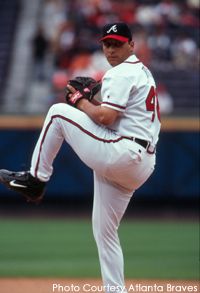A lot of practice, discipline and focus go into the making of a pitcher. But even highly trained athletes need to warm up before they put their skills to the test. How a pitcher gets ready to perform depends on whether he's a starting pitcher or if he'll come into the game in a relief role, the type of weather on game day and even the pitcher's age.
Since a relief pitcher isn't called upon until late in the game -- if at all -- he can't afford to go through an elaborate pitching routine for every one of his team's outings. Nor can he, in most cases, enter a game completely cold and expect a good performance. Relief pitchers jog, stretch, throw and swing before a game as if they're just like all the position players. Then they try to keep warm during the game by wearing extra clothing and moving in one form or another. After a few innings, it's time to do some overhead stretches, torso rotations and general limbering of the leg muscles. This routine continues every half inning [source: Cressey].
Advertisement
A starting pitcher wants to be ready to perform optimally without wasting energy for the task ahead. A typical warm-up lasts approximately 20 minutes total. It consists of a few minutes of running, followed by stretching and concluding with 15 minutes of throwing at increasing intensities. It's recommended that a starting pitcher instruct his catcher to move closer to him than normal. As the pitcher gets warmer, the catcher can move back [source: Ellis]. Some experts recommend limiting to the number of warm-up pitches to 30 to 45, with no more than a third of those pitches thrown with 100 percent effort [source: Gazaway].
Cold-weather games require more activity and clothing to get a pitcher to break a sweat and stay ready (in the case of a relief pitcher). The pitcher's age also dictates the type of routine that's necessary. Pre-adolescent pitchers are far less likely to pull a muscle and tend to be more able to perform on a moment's notice [source: Reed]. A few pitches may do the trick. Teenagers may need as many as 20 to feel in command of their abilities [source: Reed]. At the professional level, a pitcher has a better understanding of his particular needs, and he also tends to have more resources to keep him game ready -- heaters in the bullpen, for example, and physical trainers to provide massage if necessary [source: Cressey].
Pitchers vary in their physical abilities, routines and styles. The goal of the warm up is to expend no more energy than necessary to achieve optimum results once the pitcher takes the mound.
Advertisement


